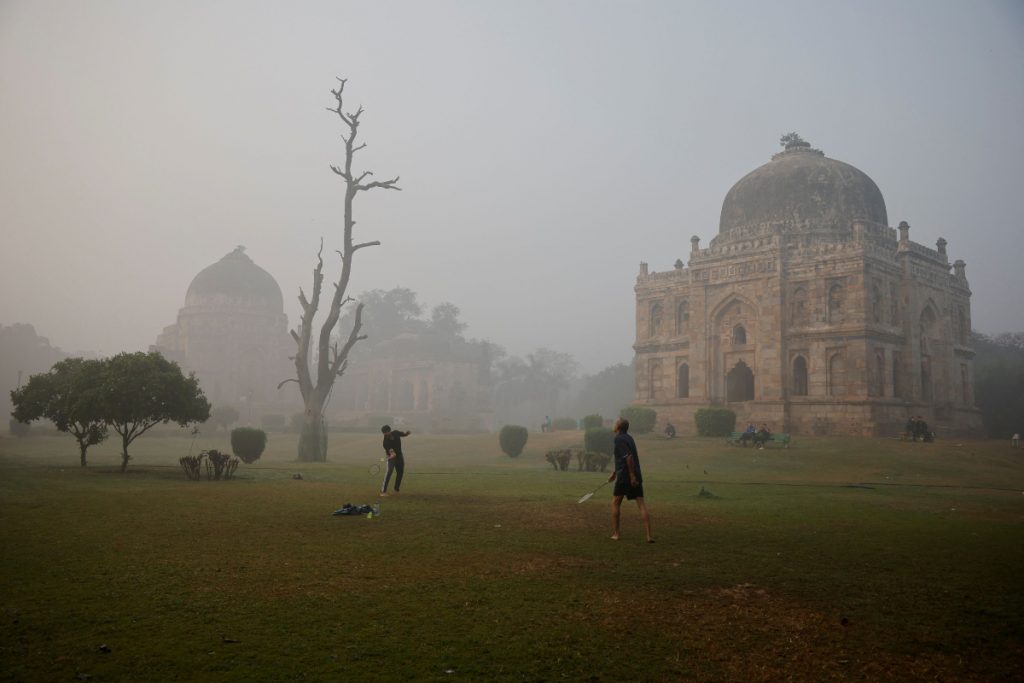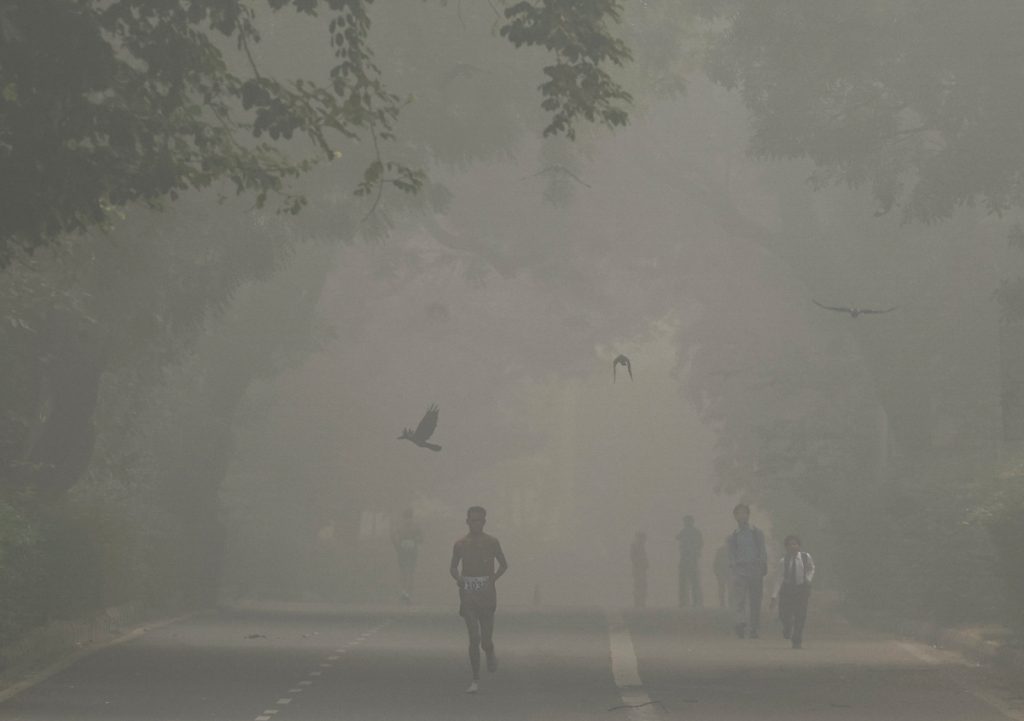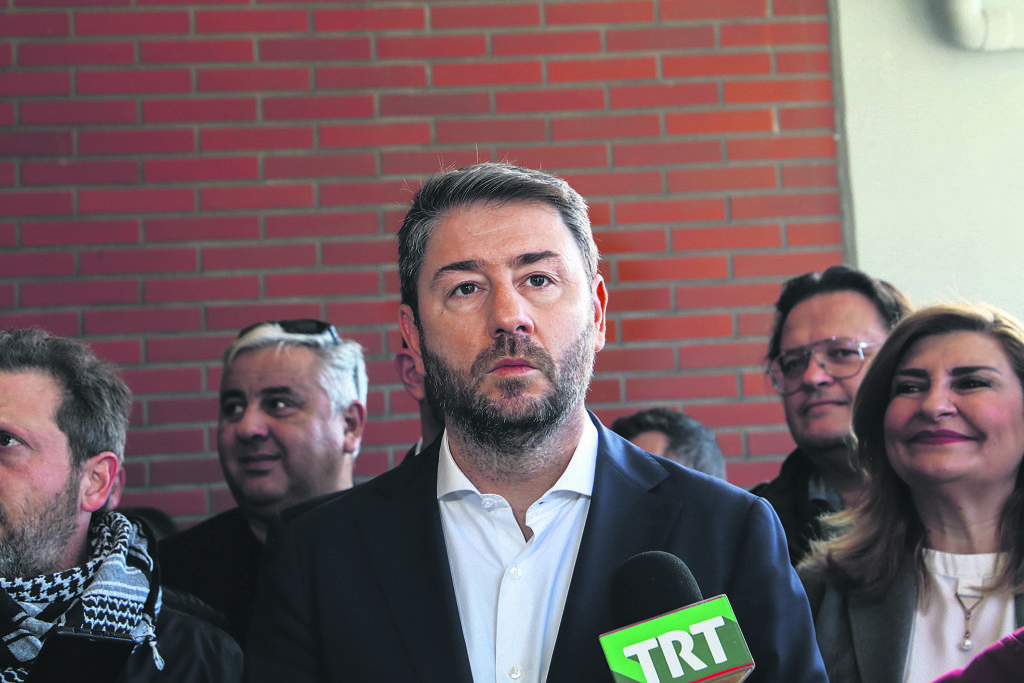Table of Contents
A thick layer of toxic cloud covered most parts of northern India on Monday morning. At the same time, air pollution in New Delhi reached a level more than 60 times higher than the upper limit set by the World Health Organization (WHO), according to measurements by the company IQAir.
The concentration of PM2.5 microparticles (the most dangerous, because they diffuse directly into the blood) was measured in the morning at 907 micrograms, per cubic meter of air in some parts of the metropolis of 30 million inhabitants, according to IQAir.
PM2.5 particles are carcinogenic and enter the bloodstream through the lungs.
The city faces record levels of air pollution every winter due to toxic fumes from factories and road traffic. At the same time, those from the seasonal burning of agricultural residues are also added at this time of year.
Cooler temperatures and light winds in winter, which lasts from mid-October to at least January in India, intensify the phenomenon.
Local authorities activated level 4 of their alert plan on Sunday afternoon “in order to avoid further deterioration of air quality”.
Most schools in the region remained closed today, traffic restrictions were tightened and employees were told to prefer to work remotely until further notice.
Schools in the capital are conducting distance learning today by decision of the authorities, with the exception of two high school classes due to worsening air pollution.
In addition to the closure of the majority of classes, other measures were taken including restrictions on construction sites and the movement of diesel trucks.
The government also called on children, the elderly and anyone with heart disease or lung disease to “stay indoors as much as possible».
What can air pollution cause?
According to the WHO, air pollution can cause cardiovascular and respiratory diseases as well as lung cancer.
A study published last June found that air pollution is responsible for 11.5% of mortality in Delhi, or 12,000 deaths annually.
In October, India’s Supreme Court ruled that access to clean air was a fundamental right, ordering central and state governments to act.
See photos from the phenomenon
![India: Covered with cloud – The country is on emergency alert [Εικόνες]
– India: Covered with cloud – The country is on emergency alert [Εικόνες]
–](https://www.tovima.gr/wp-content/uploads/2024/11/18/india-nefos-1024x683.jpg)


#India #Covered #cloud #country #emergency #alert #Εικόνες

What practical steps can individuals implement in their daily routines to collectively reduce air pollution in heavily affected cities like New Delhi?
1. Living in the digital age, how can technology be used by governments to effectively monitor and control air pollution levels in major cities such as New Delhi?
2. What role can individuals play in reducing their daily carbon footprint to combat the toxic air pollution crisis in India? Are there specific actions they can take to make a significant impact?
3. How is the impact of air pollution on health being handled by the Indian government? What initiatives have been taken to protect vulnerable populations like children and the elderly?
4. Is there a need for stricter regulations when it comes to industrial pollution and the burning of agricultural residues in India? If so, what changes can be made to current policies to achieve this?
5. The Supreme Court of India has recognized the right to clean air as a fundamental human right. How can this be enforced and implemented at a national level? What are the challenges in doing so?
6. Can we expect to see any changes in long-term government planning and infrastructure development to prioritize sustainability and environmental protection, given the health and economic implications of air pollution?
7. Delhi is known for its severe air pollution issues every winter. How does the government plan to tackle this annual problem on a broader, more comprehensive level?
8. What are the key factors contributing to the high levels of air pollution in India, and how can they be mitigated?
9. The images accompanying the article show a thick layer of haze and smog enveloping New Delhi. How does this level of pollution impact daily life for residents living in such a polluted atmosphere?
10. What can the international community do to support India’s efforts to combat air pollution and protect its citizens’ health? Are there any potential collaborations or partnerships that could be explored?

